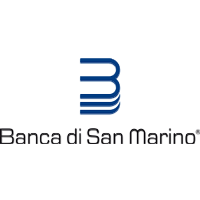The history of the Republic is closely linked to Marino, the founder and patron of the land that bears his name. The numerous hagiographic books on the Saint’s live, dating back as far as the tenth century, preserved in the most illustrious Italian libraries, narrate that at the time of the Christian persecutions, around 257 AD, the Roman emperors Diocletian and Maximian proclaimed an edict for the reconstruction of the walls and fortifications of Rimini, destroyed by Demosthenes, king of the Liburnians.
Among the many people from Dalmatia were Leo and Marino, Christians, skilled stonemasons, originally from the island of Rab.
After completing the reconstruction, the two friends devoted themselves to preaching the Gospels until one decided to retire to Mount Feretrio (now called San Leo) and the other on Mount Titano.
Marino was a righteous and charitable man, devout and respectful: the fame of his wisdom and his prodigies even spread to the nearby communities.
The miraculous healing of Verissimo, son of Felicita, owner of Mount Titano, left paralyzed, was momentous. As a sign of gratitude, the lady converted to Christianity along with the fifty three members of her family and bequeathed the Saint and his successors perpetual possession of the mountain.
Marino continued to live on the mountain, first in solitude, then welcoming other devotees and building an initial community.
He died on the 3rd of September in an unknown year.
Legend dates his death in the year 301 AD, but more accurate studies indicate inaccuracies in the dates offered by biographies and suggest the hypothesis that Saint Marino lived in an earlier era.
There are few historical sources that allow for the reconstruction of the events of the Dark Ages.
In the sixth century, as confirmed by a letter sent in the year 511 from monk Eugippio to deacon Pascazio, there was a monastery on Mount Titano led by an abbot.
A document dating back to the year 754 – Quierzy’s promise, between the king of the Franks, Pepin the Short and Pope Steven II – mentions the Castle of San Marino for the first time, thus it can be inferred that the monastic settlement had assumed the characteristics of a fortified village.
A diploma from the king of Italy, Berengar II, drafted in the Parish of San Marino, is dated 951; along with Placito Feretrano on February 20, 885, it testifies the existence of the community gathered around a Parish.
Later writings, preserved in the State Archives – Donation from Uberto Tebaldo and Lavinia to Atonio priest and notary of the Parish of San Marino in 1113; Pope Honorius II papal bull dated 1125; Donation deed from John abbot of San Gregorio in Conca to Raniero parish priest of San Marino dated 1219 – confirm that the Parish, protected by the castle walls, had become the centre of political, social, economic and religious life for the community of San Marino.
San Marino had a municipal type organisation already in the first half of the thirteenth century: it was governed by an Arengo (Communal assembly of heads of families) with legislative power; it was led by two Consoles; it had its own statutes, but controversies continued with the Church which intended to control the community and claimed the right to levy duties and taxes.
An important document, the 1296 Paper scroll, informs us of a court case between the town of San Marino and the vicar of Montefeltro, on the payment of the Podestà’s salary.
Among the various testimonies, the one by Pagano, priest and rector of the Church of San Giovanni sotto le Penne, was especially noteworthy. He sustained that Marino had obtained possession of the Mount by lady Felicità; he stated he had seen the donation deed and reiterated that San Marino was a free land, not subject to anyone, thus exempt from any taxes.
In the fourteenth century, San Marino had the characteristics of a Medieval fortified city: construction of the Church of Saint Francis was completed in 1361 and the fortifications were consolidated with the constructions of the third curtain wall that enclosed the entire population.
The Arengo of the heads of families, obviously become too numerous, was replaced by a Council made up of sixty members.
The fifteenth century was a period of land expansion for San Marino.
Following the wars fought supporting the Papal States against the Malatesta, lords of Rimini, San Marino obtained rule over the castles of Fiorentino, Montegiardino and Serravalle, as proven by the Pius II papal bull of 1463.
This was also the century when, thanks to the alliance with the dukes of Urbino, the Republic’s independence was consolidated and recognised by bordering lords and powerful Italian states.
From that moment the final lay of the Republic’s lands took shape and remained this way over time.
There were various occupation attempts in the sixteenth century: in 1503 by Cesare Borgia; in 1543, Fabiano from Monte San Savino attempted to invade the Republic without success and in 1560 Leonardo Pio, lord of Verucchio, assailed the walls but the population of San Marino succeeded in quelling the attack.
The seventeenth century stood out for the publication of a series of important laws: “Statute decrees and orders of the illustrious Republic” containing all the statutory material, expanded and organically arranged, but it was also characterised by a period of decadence and internal unrest that led, in 1739, to the occupation of San Marino by cardinal Julius Alberoni of Ravenna.
With the support of Austria, France and Spain, San Marino turned to pope Clement XII and, on February 5, 1740, the Republic regained its independence.
In 1797 Napoleon Bonaparte sent General Monge to San Marino to express friendship and offer the Republic a land expansion. However, Antonio Onofri, while grateful to the emperor, wisely refused the offer.
With its independence recognised by the Congress of Vienna in 1815, the Republic continued to harbour political refugees and the oppressed.
Among these, Giuseppe Garibaldi who, pursued by the Austrian army, found shelter in San Marino on July 31, 1849.
A significant economic, political and social crisis was experienced towards the turn of the twentieth century.
An aristocratic any oligarchic regime has been established; the Prince and Sovereign Council elected its members by cooptation and for life; the population needed a more democratic participation in the country’s accomplishments.
It was thus that on March 25, 1906, an extraordinary session of the General Arengo of the heads of families was called and it was decided to abolish the despot council and renew members by holding an election.
However, the economic crisis did not abate and many citizens of San Marino, for work reasons, were forced to leave the country to emigrate to the United States, Argentina, France and Belgium.
During the World Wars, Sammarinese volunteers fought alongside Italian soldiers and, specifically, in the Second World War, San Marino, a neutral country, consistent with the principles of hospitality and mutual aid, sheltered over 100,000 refugees from Rimini and surrounding towns.
Today, the Republic maintains its democratic and independent country status and has diplomats and consuls in numerous countries throughout the world.


